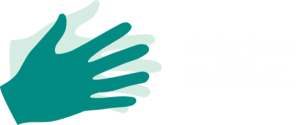Germs – what are they and how do they spread?
This section will answer the following questions:
- What are germs?
- How do they spread?
- How do I know where these germs are?
What are germs?
Germs are tiny organisms, which you can’t see, but can cause infection and disease.
There are different types of germs
- viruses (e.g. colds, flu, COVID-19)
- bacteria (e.g. bacterial gastroenteritis such as salmonella, which is a type of food poisoning)
- parasites (e.g. giardia – can occur after drinking contaminated water)
- fungi (e.g. ringworm or tinea, or thrush)
But… ALL germs can be removed to safe levels with effective cleaning and disinfection.
How do germs spread?
Germs can be spread through two types of contact
- Direct contact – touch (shaking hands, a hug, a kiss)
- Indirect contact – touching surfaces (germs from hands touch surfaces like tables and pens)
Following that contact germs then need to enter the body to cause infection e.g. via a break in your skin or by touching mucous membranes such as your eyes or mouth.
Infection Control Nurse Hack
How do germs spread?
Germs can be spread through the air
- By droplets – large particle droplets that are generated by a person coughing, sneezing or talking. These particles can then be breathed in, or they land on surfaces and contaminate the hands via the contact route when the surface is touched
- By air – small particle droplets that remain suspended in the air for extended periods and are breathed in
- COVID-19 (virus)
- Influenza (virus)
- Meningococcal (bacteria)
- Measles (virus)
- Tuberculosis (bacteria)
Infection Control Nurse Hack
Enrol Now For The Full Infection Control Cleaning Course
Click the link below to setup create your account and access the full course material. Once you have completed the course, you will receive a certificate of completion and a certificate badge you can include on your website or share on social media profiles.
Course Duration: 90 minutes
Course Price: $95 (inc GST)
